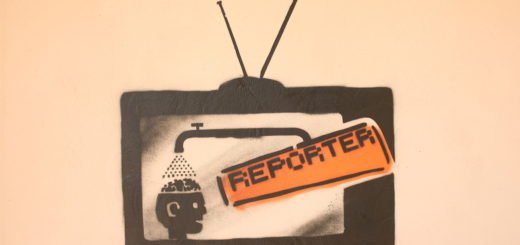Meet a foster-care kid who built himself a life
 When you see a homeless street kid, chances are you don’t think of the person who broke your heart in high school. I do.
When you see a homeless street kid, chances are you don’t think of the person who broke your heart in high school. I do.
When I think of Adam Bartley, then 15, I picture him perched on a dock overlooking the Houston Ship Channel — elbows on bony knees, pensively watching his cigarette smoke drift toward passing tankers. We met when Adam came to a group home in La Porte during my senior year of high school.
I spent hours running my fingers through his floppy blond “Flock of Seagulls” hair and kissing him. I said he looked like a Botticelli angel; he looked up Botticelli. He told me he was gay, but all that time we spent cuddling made me think otherwise — until he started going out with my closest male friend.
Yet we stayed friends, even as he was bounced from group home to group home. He last called in 1989 after fleeing his 35th foster placement at 17. That was just days before he landed on the Houston streets, escaping them via whatever drugs he could procure, and disappearing from my life. I didn’t know how to contact him or his imprisoned mother. I assumed he was dead or in prison himself.
Last year I found Adam via the Internet. In contrast to his chaotic childhood, former Austinite Adam Bartley, 33, now lives a middle class life in Washington, D.C., with his partner of two years. With a GED and no college degree, hard work earned him a position as a sign language interpreter for Gallaudet University—despite being hard of hearing himself.
Incredibly, the obstacles Adam faced aren’t unusual for kids leaving foster care. Statistics for former foster children are abysmal, and Adam was affected by many of the issues described in the studies.
For example, the March 2005 “Northwest Foster Care Alumni Study,” (by the Casey Family Programs) found that of former foster children ages 20 to 34, one in five were homeless within a year of leaving care. Former foster children had rates of PTSD (post-traumatic stress disorder) nearly double that of American war veterans, and one-third experienced maltreatment in foster care. Adam wasn’t surprised at those numbers, as he has PTSD, and almost everyone he knew in the system had a story.
“Predators go where there’s prey — young, nubile prey. No one should be surprised that statistic is so high,” he said recently.
In some ways, Adam was lucky. After a year on the streets, he tracked down his mother in Beaumont and moved in; she threw him out for disrespecting house rules. In 1991, newly diagnosed with HIV, he became friends with a lesbian couple at a retreat for the HIV positive. A month later he moved in with them, becoming part of the family. Improbably, one foster mother then went though a sex change operation, becoming Adam’s foster father.
Although I never knew he was here, Adam was an Austin resident from 1997 to 2003. He has a zillion Austin friends. When he visits, he stays with his half-brother in Hutto, Cody Moreno, 31, and Moreno’s family. Moreno describes himself as being very proud of Adam for the obstacles he has overcome.
As surreal as it seems, I might have easily passed Adam on the street, as he was “Keeping Austin Weird,” without recognizing him. The floppy locks are gone, his head shaved to disguise his receding hairline. The earrings and the complicated facial hair are new. A hawk tattoo soars across his chest, and a faint Harry Potter-esque lightening bolt scar marks his forehead, a memento of a bloody 1999 Town Lake bike accident.
More sobering are the surgical scars from the HIV-related infections he’s battled for 14 years. The passage of time is inscribed on his body. It’s also clear when we talk. While I saw him three times last year, the time we spent together wouldn’t equal the hours you’d need to watch the Lord of the Rings trilogy. When we talk on the phone, it’s awkward, as we know none of the same people, and too many years have passed.
While I loved the boy, I don’t know the man. As he said, it’s been half a lifetime since I knew him. Yet I think his foster mother June Faulkner, 62, said it best: “With all of his setbacks and bumps in the road, he turned out to be a hell of a guy.”
While I cared deeply about Adam when he was in foster care, there wasn’t anything I could do for him.
Yet you can help kids like Adam. CASA of Travis County (Court Appointed Special Advocates) has adult volunteers who speak in court for youth in foster care. For those on the streets, Austin’s LifeWorks provides homeless youth with health care and safe sleeping spots. LifeWorks shelter Director Duncan Cormie estimates one-third of Austin street kids spent time in foster care.
The children in foster care aren’t just statistics, they are young people trapped in a situation they didn’t create. If you don’t want to get emotionally involved, a little cash goes a long way. Show a little love for kids who don’t have enough of it.





















